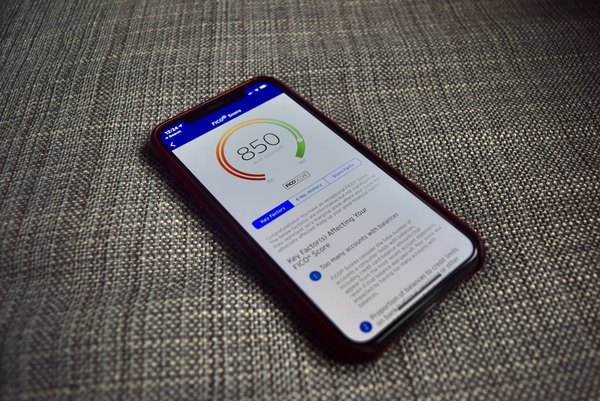When you hear the term ‘credit score,’ you probably think of the FICO score as it’s the most common. However, there are other scores available including multiple variations of the FICO score along with the VantageScore.
Regardless of the score a lender uses, the bottom line is that a credit score is a summation of your credit history in a number. The number gives lenders something to assess your financial history by comparing it to a standard scale.
Understanding credit score vs FICO differences helps you understand what lenders see when they look at your credit. If you don't know your score, you should get your free score and report today.
What is a Credit Score?
The term credit score could mean any of several credit score types available today. It’s a 3-digit number ranging between 300 and 850. Lenders use this number to determine your creditworthiness. Higher credit scores mean better credit responsibility and lower credit scores mean you are a higher risk of default.
Credit bureaus derive your credit score using an algorithm that takes into consideration your credit history. It looks at the following factors:
- Your payment history (do you pay your bills on time?)
- Your total credit line vs the total outstanding credit
- The types of credit you have open
- Your total amount of debt
Each credit bureau – Experian, TransUnion, and Equifax have their own factors and algorithms, so you may see a slightly different score depending on the bureau you pull.
How is a Credit Score Calculated?
FICO and VantageScore have similar scoring models. They both use your payment history, available credit, current balances, and recent inquiries in their calculations with the largest emphasis placed on credit history and credit utilization.
What is a FICO Score?
The FICO credit score was created by the Fair Isaac Corporation. It’s the score used by 90% of lenders today, so it matters the most. It uses the 300 – 850 credit score model with 300 being extremely poor and 850 being perfect. The FICO score is usually updated monthly unless there was no activity that month or the creditor doesn’t report information monthly, but rather every 45 to 90 days.
The FICO score uses the following weighted averages:
- Payment history makes up 35% of the score
- Utilization (amount of outstanding credit vs your total credit limit) makes up 30% of the score
- Age of your credit makes up 15% of the score
- New accounts make up 10% of the score
- Your credit mix makes up 10% of the score
The FICO model uses the following credit score ranges:
- 350 – 579 poor credit
- 580 – 669 fair credit
- 670 – 739 good credit
- 740 – 799 great credit
- 800- 850 exceptional credit
Each lender may have their own credit score ranges, but the above chart offers the most common way lenders look at your credit scores.
What is a VantageScore?
The VantageScore was created by the credit bureaus in 2006. It’s the most common FICO alternative of the credit score types. Like FICO, it has the ranges of 300 – 850. The VantageScore model, however, makes it possible for anyone to have a credit score even if they only have one month of credit history. FICO requires at least a six-month history to generate a score.
The VantageScore uses the following weighted averages:
- Payment history makes up 40% of the score
- Credit age makes up 21% of the score
- Credit utilization (outstanding balance vs total credit balance) makes up 20% of the score
- Credit balances make up 11% of the score
- Recent credit makes up 5% of the score
- Available credit makes up 3% of the score
The VantageScore credit score ranges are slightly different than FICO:
- 350 – 630 bad credit
- 630 – 690 fair credit
- 690 – 720 good credit
- 720 – 850 great credit
As you can see there are a few differences. While they both consider payment history the most important, the similarities end there. The FICO model takes credit utilization very seriously, while VantageScore looks at the credit age. This means for VantageScore you want older credit accounts rather than a multitude of new accounts. For FICO scores, however, you want to limit your outstanding balances, keeping your utilization rate at less than 30% whenever possible.
How to Get Your FICO Score
You have a few options to get your FICO score for free. You can get it directly from Experian, or possibly from your bank or credit card companies. Both entities typically offer free monthly access to your FICO score – it’s a service they offer with most accounts. You may have to ‘opt into’ the program, but it’s free.
If your bank or credit card company doesn’t offer it, you can get your free score from CreditSesame or CreditKarma. Just keep in mind that your credit scores may vary depending on the credit bureau you receive it from – they may each have slightly different information, which can affect your credit score.
How to Get your VantageScore
You can get a free copy of your VantageScore from a few financial providers including:
- Chase
- Capital One
- OneMain Financial
- US Bank
If you don’t bank with any of those institutions, you can also get a free copy from Credit Sesame or Credit Karma.
No matter the credit score types a lender uses, the bottom line is that you need a good credit history to have a good credit score. Your payment history plays the most important role, but so does the type of credit and the amount of credit you have outstanding. Your credit score shows lenders how financially responsible you are and helps them make future lending decisions. Your credit score may also affect your ability to rent a home, get a job, or even get insurance, in some cases. Maximizing your credit score starts with knowing where you stand – check your credit score to know what you may need to improve to get a higher credit score too.







